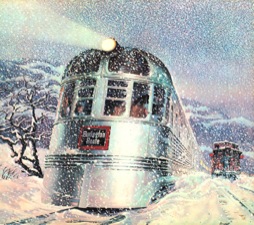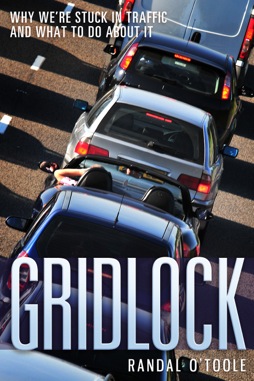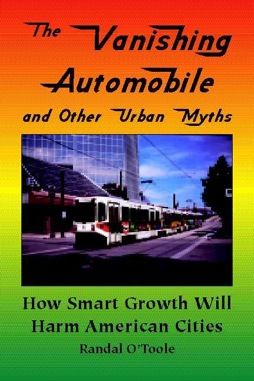Waymo is operating driverless taxis in Los Angeles, Phoenix, and San Francisco, partnering with Uber in Atlanta and Austin, and expanding into Miami and Washington DC soon. Volkswagen is making a driverless ID Buzz available to ride-hailing and taxi companies anywhere. Tesla has begun offering robotaxis in Austin, with some opening glitches. Amazon is set to build 10,000 driverless taxis a year. A company called Aurora is testing driverless trucks between Dallas and Houston.
Volkswagen’s ID Buzz configured for driverless taxi service.
People have responded to the growth of driverless vehicle programs with predictable horror. Some worry that driverless cars will increase congestion and take people’s jobs. Others fear that they will be dangerous on the highway, especially if they begin “hallucinating.” Perhaps due to fears like these, ICE protesters set five Waymo cars on fire in Los Angeles.
Some of these fears are without foundation. Although large language models like Chat-GPT, game-playing programs such as AlphaGo and Deep Blue, and autonomous vehicles have all been labeled “artificial intelligence,” these are in fact very different things.
Wikipedia says that the term “artificial intelligence” embraces such things as machine problem solving, planning and decision making, social intelligence, and natural language processing, these are non-overlapping programs. While researchers may have an ultimate goal of creating an artificial general intelligence that could do all of these things, they are nowhere near that and probably won’t be for decades.
ChatGPT and similar programs do natural language processing and they do it well enough that they could probably pass a Turing test. Yet they are incapable of simple arithmetic and more complex analysis is well beyond them. They are unable to tell the difference between truth and falsehoods or even to understand the meaning of truth.
Someone has posted a database of cases in which lawyers relied on such programs to write their legal briefs only to discover (after submitting the briefs to a court) that the program fabricated legal citations. The idea that these language models, which some have called “stochastic parrots,” will soon evolve into a general intelligence or be self-aware should be completely laughable, yet it makes a great fund-raising tool to attract gullible investors.
Driverless car programs are not natural language processor and thus are in no danger of hallucinations. The main potential problem with autonomous vehicles is that they are only able to handle predictable situations and not capable of reasoning through something that wasn’t predicted by the programmers. Waymo deals with this by having people in offices monitoring every Waymo driverless taxi on the road. If a car gets into an unexpected situation, the monitors can take control remotely. Thus, they aren’t completely driverless.
Tesla, at least to start, has someone sitting in the driver’s seat able to take over if necessary. Waymo initially did this as well, but Waymo cars are far more sophisticated than Tesla’s. Waymo’s current driverless cars have 29 cameras, five lidar, and six radar sensors. Moreover, they are “geofenced” which means they rely on highly precise maps and can’t travel outside of mapped areas.
By comparison, “full self-driving” Tesla’s have eight to twelve cameras, one RADAR, twelve sonars, and no lidars. They are not geofenced, meaning Tesla assumes that the software will be able to deal with any situation anywhere. While that means the cars can go many places that Waymo vehicle can’t go, it also makes it more likely that the Tesla will get stuck or in accidents.
The ID Buzz is more like a Waymo vehicle, with 13 cameras, nine lidars, and five radars. As near as I can tell, it is not geofenced and promises to “serve cities, suburbs, and rural areas alike.” Volkswagen’s driverless research hasn’t been as publicized in the U.S. as Waymo’s, but the German company began developing autonomous cars when Google was still in its infancy.
As far as congestion goes, driverless cars should reduce it by increasing the capacity of roads to move vehicles. Humans respond to traffic in ways that reduce roadway capacities. Machines should be able to avoid that, thus allowing roads to move more vehicles per hour. Freeway lanes, for example, can potentially move 2,000 to 2,200 human-driven cars per hour at speed, but in traffic this can fall below 1,000. If every car on the road used adaptive cruise control, a freeway lane should be able to handle at least 2,800 vehicles per hour, and completely autonomous vehicles should be able to do more. Moreover, this number isn’t likely to shrink with machine-driven vehicles the way it does with human-driven vehicles.
I hope that driverless vehicles will take away people’s jobs in the future. The U.S. faces major labor shortages, and while some people may enjoy driving there are plenty of more productive things people can do with their time. Replacing human drivers with machines may cause short-term hardships but in the long run should increase the nation’s productivity and wealth. If I owned a taxi company, I would be contacting Volkswagen right away to see about converting my fleet of vehicles into a driverless one, thus allowing my company to compete against Uber, Tesla, and Waymo.









Let’s say you have a 30-to-45-minute commute from your suburban home to the office downtown. Your (as in: a vehicle you own and is used only by you and your family) driverless car waits quietly for you to get dressed and get into whenever you are ready. Car drives you to work and parks itself somewhere downtown — likely somewhere less expensive than the parking garage attached to your high-rise office building.
At the end of the day, reverse the above.
Would people pay to own such a vehicle rather than relying on a self-driving taxi? A vehicle that is available on the owner’s schedule 24/7 with no wait or delay. A vehicle that is nicer than a public vehicle not built to the customer’s tastes and desires?